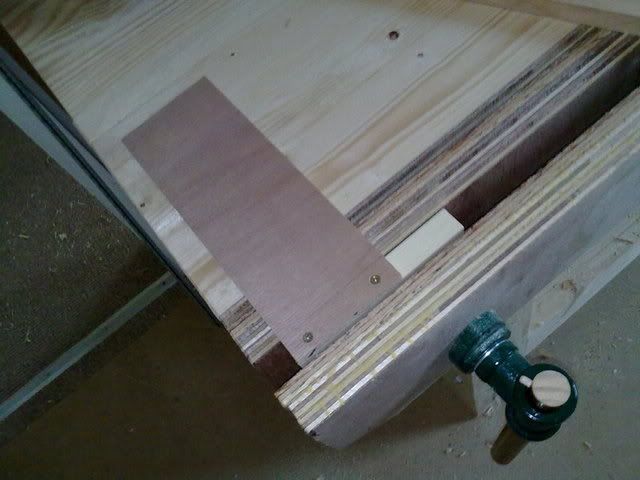Mikey R
Established Member
EDIT: I just wanted to write that this isnt really a good idea - scroll down for the propper solution. Mike
---
Hey,
I thought Id share this discovery - Im sure its hardly new, but I'd never read about it.
I had to face joint a bookmatched back for an electric bass. As the boards are under 9mm thick, I needed something very thin to use as a stop. A while ago, Chris Schwarz suggested using a thin steel rule as a planing stop for thin stock on his blog (though I cant now find the entry), so I went looking for my rule.
Since moving, Ive not seen alot of my tools, Im sure they're in the shop somewhere, Im just not sure in which tool box. The closest thing to hand was my engineers square, which I found can be clamped into the face vice and works perfectly:


I hope someone else finds this trick useful!
---
Hey,
I thought Id share this discovery - Im sure its hardly new, but I'd never read about it.
I had to face joint a bookmatched back for an electric bass. As the boards are under 9mm thick, I needed something very thin to use as a stop. A while ago, Chris Schwarz suggested using a thin steel rule as a planing stop for thin stock on his blog (though I cant now find the entry), so I went looking for my rule.
Since moving, Ive not seen alot of my tools, Im sure they're in the shop somewhere, Im just not sure in which tool box. The closest thing to hand was my engineers square, which I found can be clamped into the face vice and works perfectly:


I hope someone else finds this trick useful!





































